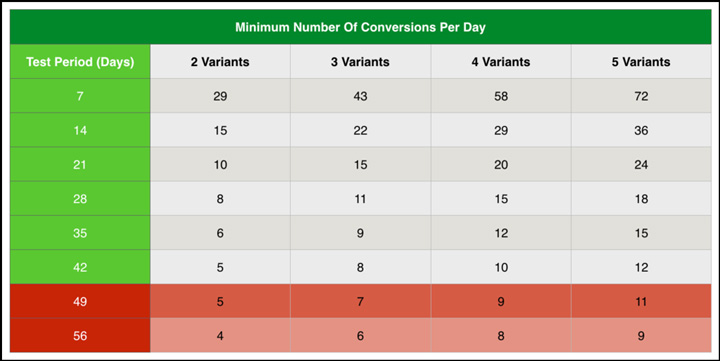Conversion Rate Optimization (CRO) is a great practice to add to your marketing arsenal because it does not take much time or money, and does not typically require additional tools. Not only does CRO help improve website ROI, but it also helps your customers through the sales process.
According to Neil Patel, “In your business, revenue is your most important success indicator. Conversions are the next best thing.”
Why does Neil Patel say this? Because conversions focus on the visitors already on your website, unlike other marketing efforts, such as SEO and advertising. However, conversion, unlike revenue, does not solely focus on sales, but also on helping customers through the sales funnel by assisting lead generation efforts.
According to OptinMonster, “Conversion rate optimization is improving your site to maximize the number of conversions you get. When you know what conversion actions you want visitors to take, and what your current conversion rate is, you can work on convincing more visitors to convert.”
Depending on your type of business and industry, your desired conversion could be purchasing a product or SaaS, adding a comment to a blog post, requesting a consultation, completing a lead generation or contact form, submitting a review, or signing up for your newsletter. These are types of macro conversions.
According to CrazyEgg, “The macro conversion you’ve set for your website drives every other strategic element on the site: the copy, design, layout, everything.
“But for any macro conversion to take place, visitors often go through a series of micro conversions. These are the small steps they must take to understand the value of your offer and gain enough trust to take action.”
Examples of micro conversions include clicking a button to go to the product page, reading reviews or case studies, sharing a blog post on social media, and adding a product to the cart. These micro conversions are directly connected to macro conversions without being the macro conversions themselves, but they are like breadcrumbs leading to the macro conversions. These clicks and page views help show you the customer journey on your website before a macro conversion.
Overall, CRO is the practice of optimizing those macro and micro conversion opportunities to help the customer through the sales funnel. CRO not only helps improve your overall conversions and sales, but it is also cost-effective.
Whether you want to add CRO to your marketing arsenal or want to improve your process, follow these steps:
Step 1: Define your conversion goals AKA macro conversions.
What is your primary goal for your business’s website? Do you want to sell a specific product or service, or multiple products or services? Do you want to grow your email list or focus on other lead generation forms? Do you want consultation and contact forms completed?
Chances are, the primary goal for your website is to sell in some way. According to OptinMonster, you will want to optimize pages that directly relate to increasing revenue, including:
- Your most visited pages
- The important lead generation pages
- Landing pages for important pre-sales resources
Your website goals are typically the same as your macro conversions. For example, if you sell products, your website goal and macro conversion is to sell those products.
Jot down all of your macro conversions for your website, but then choose one to focus on currently for CRO. After optimizing pages for one of your macro conversions, move on to the next step.
Step 2: Determine micro conversions that lead to macro conversions.
After you’ve chosen one macro conversion to focus on, it’s time to determine the micro conversions your customers use to get to the macro conversion. This is where heatmaps and Google Analytics come into play. Follow the trails your website visitors take to convert. Where do they start on your website? Where do they go before making the desired action (macro conversion)? What do they click or read? Do they stop along the way to the desired action? If so, where?
By following your customers’ proverbial breadcrumbs as they click through your website, you can see what pages and CTAs work and don’t work. You can see what pages are visited most often before a macro conversion. From there, it’s important to optimize those highly visited pages first.
Another way to determine micro conversions is to test your target audience (see usability testing in step 5). You can either do this in person, if possible, or through customer service. For example, if you have customers calling your customer service department or sending a message to your chatbot for assistance during their purchase, where are they getting stuck? Is the CTA not clear? Do they have questions you don’t answer on your website?
Step 3: Measure your current conversion rate.
Measuring your current conversion rate is simple. You can either measure your total, website-wide conversion rate, or, depending on the size of your business and website, you can measure the specific conversion rate of one product, service, or CTA button. To focus on CRO for one macro conversion and its associated micro conversions, choose one CTA button.
If you have multiple CTA buttons for the same product, for example, focus on one button at a time. This way, you can optimize each CTA button and web page over time with this process.
Determine your conversion rate of that CTA button with the following equation:
Number of people who click on CTA and convert / Total number of visitors on that web page = conversion rate
To view the conversion rate as a percentage, multiply it by 100.
Depending on your industry, the baseline conversion rate will vary. However, the most important numbers to notice during this process are your business’s CRO numbers. Keep your current conversion rate handy. You will need it when you test.
Step 4: Hypothesize what may improve the conversion rate.
Revisit your notes from step 2. What pieces can be tested to improve macro conversions and micro conversions? Make a list of optimizations that can be made. These can focus on improving user experience, showcasing your unique value proposition, improving the overall design, addressing customer questions, adding urgency, and more.
When your customers convert, what are they doing? When they don’t convert, why don’t they? Hypothesize potential roadblocks and problems. How can you relieve your customers’ concerns? How can you make the process easier for the customer?
Common optimizations include:
- CTA button verbiage, color, size, or placement
- Headline content and design
- Page layout
- Language
- Media types, such as videos, images, or both
- Limited time offers, as appropriate
Step 5: Test.
Armed with what you want to improve (macro conversions) and what might improve it (micro conversions + hypothesis), you are ready to test. There are three ways to test, according to OptinMonster:
- A/B testing
- Multivariate testing
- User/usability testing
Our team prefers to use A/B testing because it allows less room for error while still enabling quick testing phases.
According to DigitalMarketer, the most common test period lasts 7 days. This means you’ll spend one week preparing for and setting up the test, and then one-week testing. For B2B businesses, the test needs to last as long as the buyer cycle.
Digital Marketer also said you need enough website traffic and conversions to ensure the testing data is accurate, as shown in this diagram:
If you only have a few visitors or conversions per day, then A/B testing may not be your best option. Instead, try usability testing.
Once you’ve tested the first variable for a week or longer, calculate your conversion rates for both (or all) variable pages. Is the variant page higher or lower than the original page? Keep the one that performed best.
When your hypothesis is proven correct, the conversion rate for the variant page should be higher than the original conversion rate you calculated in step 3. If not, hypothesize why.
Step 6: Repeat.
First, revisit your goals and macro conversions from step 1. Have you optimized pages for one of your goals? If so, move on to another goal and repeat the process.
Optimization is a recurring process because customer habits and needs change over time. Optimize small pieces and aspects of pages over time, and when that page seems optimized, move on. Then revisit that page again in the future.
Adding Conversion Rate Optimization to your marketing arsenal is primarily about hypothesizing and testing aspects of your website to improve the customer experience. When you improve the customer experience and make it easier for your customers, they are more likely to convert. What will you optimize first?
Learn more about our team’s Ongoing CRO project at this link.







